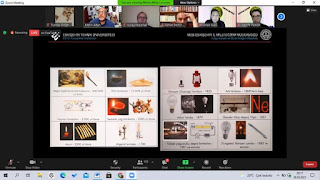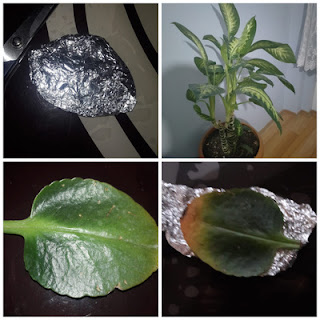29 Mayıs 2021 Cumartesi
Ertuğrulgazi Secondary School-Kader Güler-TURKEY/Webinar- Light Pollution field, laboratory and analysis studies
As Ertuğrulgazi Secondary School, we participated in the "Webinar-Light Pollution field, laboratory and analysis studies" event./Kader GÜLER-TURKEY.
28 Mayıs 2021 Cuma
Dilek DAĞ / Ay College- Metin Altan Seminar
It was a great presentation. First of all, our project founder Funda, who organized this event, and our teacher, who explained light pollution in a clear and understandable way,
Eskişehir Technical University faculty member Dr. Thank you very much to Metin Altan. It has been very useful for our students.25 Mayıs 2021 Salı
23 Mayıs 2021 Pazar
20 Mayıs 2021 Perşembe
ERTUĞRULGAZİ SECONDARY SCHOOL/KADER GÜLER
13 Mayıs 2021 Perşembe
12 Mayıs 2021 Çarşamba
9 Mayıs 2021 Pazar
The use of light in medicine
has been shortened
Light İn The Medicine
What if there was a way to treat debilitating diseases without drugs or surgery? What if chronic injuries could be healed with the application of something as ubiquitous as light?
Scientists have known for years that some wavelengths of light in certain doses can heal tissue, but they are only now uncovering exactly how light accomplishes its therapeutic effects.
Known as phototherapy, the use of light in medical treatment is producing surprisingly successful results in the treatment of a variety of ailments from topical infections and chronic wounds to autoimmune and chronic degenerative diseases, says Chukuka S. Enwemeka, dean of the University of Wisconsin–Milwaukee’s College of Health Sciences. Enwemeka, who is internationally known for his work in phototherapy, is one in a cluster of scientists at UW–Milwaukee (UWM) conducting studies in this emerging field of medicine.
Work by the UWM researchers focuses on wavelengths of light that lie in two regions of the electromagnetic spectrum: longer wavelengths in the far-red to near-infrared (NIR) region and shorter wavelengths in the visible blue region of the spectrum.
VISIBLE SPECTRUM
Light is energy, a kind of radiation consisting of photons whose individual energy levels correspond to specific wavelengths. On the electromagnetic spectrum, light is arranged by wavelength along with other forms of energy, including gamma rays, microwaves, and radio waves. White light, or the
“visible spectrum,” exemplified by the sun or incandescent light bulbs, includes blue, yellow and red light and makes up only a tiny section of the electromagnetic spectrum. White light lies between ultraviolet radiation and near red and infrared radiation.
Determining the best wavelength for phototherapy is a difficult task, says Jeri-Anne Lyons, a UWM associate professor of biomedical sciences. “[We use] only certain wavelengths, at a certain intensity, for a certain amount of ime.” Studies show that though red to near-infrared light covers wavelengths of about 600 to 1100 nanometers (nm), the 670 nm and 830 nm wavelengths are the most beneficial of the near-infrared (NIR) spectrum. Because light in these wavelengths can penetrate the skin and be absorbed by subcutaneous cells, it can act on wounds, internal injuries, and disease.
NIR light—which produces no heat—is administered through an array of light-emitting diodes (LEDs) that can be configured to the desired wavelength. Sometimes LEDs are arranged in large, flat arrays to facilitate the treatment of large wounds.
Finding the appropriate dose and dose regimen for delivering the light is important. “Like ingested medication, it’s all about the dose,” says Lyons, adding that establishing dosage for near-infrared light has been largely a matter of trial and error.
We started irradiating damaged cells in cultures and found what appeared to be a ‘sweet spot’ in terms of dosage,” says Janis Eells, UWM professor of biomedical sciences who studies how NIR light helps to slow degenerative eye disease. This dosage, which stimulated repair in the cultured cells, was also shown to be effective in animal models of disease. “We are conducting dose-response experiments now to determine the optimal dose of light.”
Last year, Eells and a team of collaborators conducted a wound-healing study in spinal cord injured veterans who, because of being bedridden and inactive, developed pressure ulcers, or bedsores, that wouldn’t heal. “Chronic wounds are ‘stuck’ in the inflammatory phase of healing. NIR light removes that obstacle,” says Eells. “If you can tone down the inflammation in a non-healing wound, like a pressure ulcer, you speed the healing.”
Conducted at the Zablocki Veteran Affairs Medical Center in Milwaukee, the study compared the rate of wound healing in two groups of veterans with similar ulcers. All wounds were first treated for four weeks with standard care (keeping the wound clean and free of infection). But only one group was subsequently given phototherapy three times a week for ninety seconds for four weeks. According to the study, the rate of healing was 250% faster in the wounds receiving the NIR light
CELLULAR RECEPTION
Although study at the Zablocki Medical Center showed that phototherapy holds tremendous promise, there is much to be done before the treatment becomes standard practice in America. This includes phototherapy experiments that help researchers better understand the cellular processes involved.
For any light therapy to work, there must be light-responsive molecules within the body that are positively altered in some way by the light waves’ energy. UWM researchers have built upon the work of Tiina Karu at the Russian Academy of Laser Sciences. It was Karu who determined that far-red and NIR light, applied using low-intensity lasers, acts on organelles of human cells known as mitochondria. More specifically, the light acts upon a molecule called cytochrome c oxidase.
ANTIBIOTIC EFFECTS
In contrast to far-red and NIR light which stimulate the body’s repair of injured cells, blue light improves wound healing by killing the bacteria that cause wound infections.
UWM’s Enwemeka is a pioneer in the use of LED blue light to clear infections. In a 2007 study supported by Dynatronics Corporation, Enwemeka discovered that some wavelengths of blue light, especially those in the 405–470nm wavelength, kill bacteria so effectively that the process even works on MRSA, the antibiotic-resistant “superbug” form of Staphylococcus aureus. What gives this shorter wavelength of light such a powerful antibiotic effect?
One explanation is that bacteria contain light-sensitive, iron-rich molecules that, upon absorbing blue light, generate free radicals that kill the bacteria. Enwemeka suggests that blue light also acts on cytochrome c oxidase in the cells’ mitochondria—like NIR light—but in this case causes the cytochrome to pair up with nitric oxide, creating a toxic environment for bacteria.
Blue light therapy has achieved undeniable laboratory results in treating antibiotic-resistant MRSA. Enwemeka demonstrated that one dose of bluelight irradiation killed as much as 92% of two pervasive MRSA strains. He has also seen what he describes as astonishing results at a clinic he works with in Brazil where the blue light, combined with NIR light, is used to treat chronic wounds like diabetic ulcers.
BEYOND TRIALS
With so much success, why isn’t phototherapy being used more widely?
Lyons, for instance, has tested phototherapy as a method of controlling the severity of multiple sclerosis, an autoimmune disease that causes progressive paralysis—interrupting vision, balance, and even thought processes by destruction of nerve cells and the spinal cord.
But while the U.S. Food and Drug Administration has approved NIR light for the treatment of pain and depression as well as skin conditions like acne and psoriasis, the FDA has not yet approved it for wound healing or the treatment of diseases like multiple sclerosis. “It’s considered ‘alternative’ therapy in Western medicine. It seems too simple for people to accept,” says Lyons.
Enwemeka agrees, but says that UWM research is moving phototherapy closer to mainstream acceptance. What the FDA is waiting for, he says, is confirmation from a large-scale clinical study before approving phototherapy for a wider variety of ailments. It’s something Enwemeka and his colleagues at UWM are determined to accomplish.
6 Mayıs 2021 Perşembe
Kaydol:
Yorumlar (Atom)
Meliha Ercan Secondary School/ Hanife PEKER/ eTwinning Certificates
We distributed eTwinning certificates to our students. Thanks to all of our students.

-
There is a message from Ay College Students; "Save your energy for a livable world in the future." Week of Energy Saving January...
-
As Ertuğrulgazi Secondary School, we participated in the "Webinar-Light Pollution field, laboratory and analysis studies" event....






















